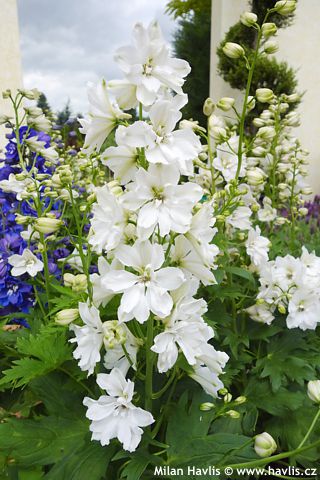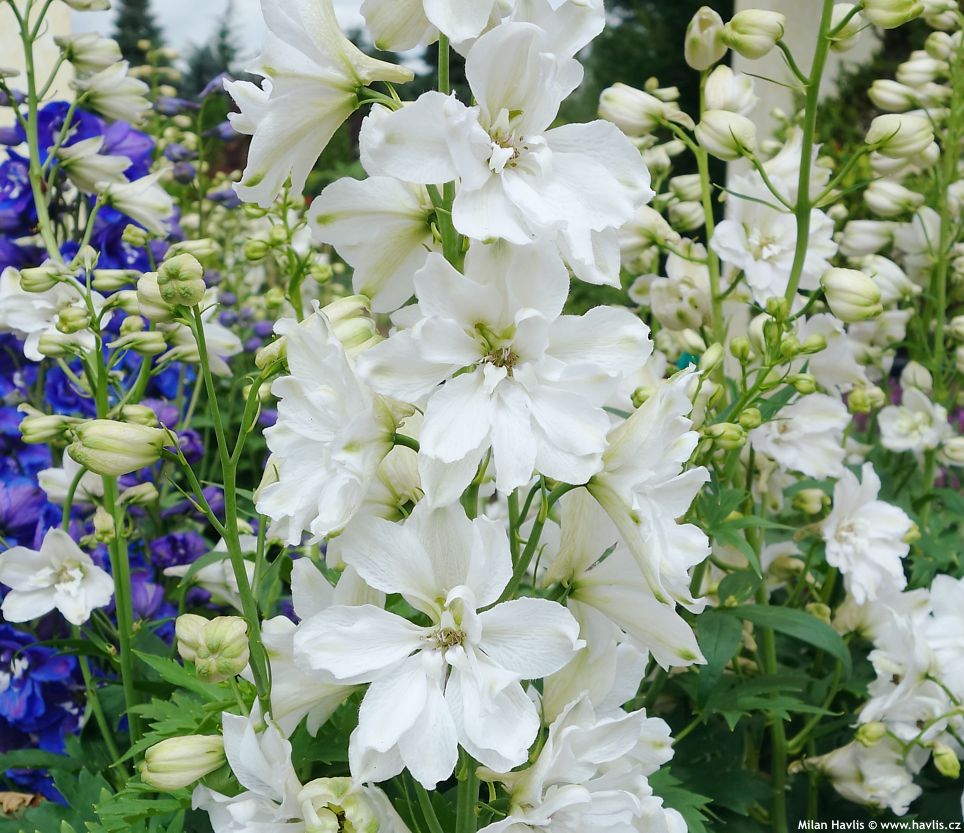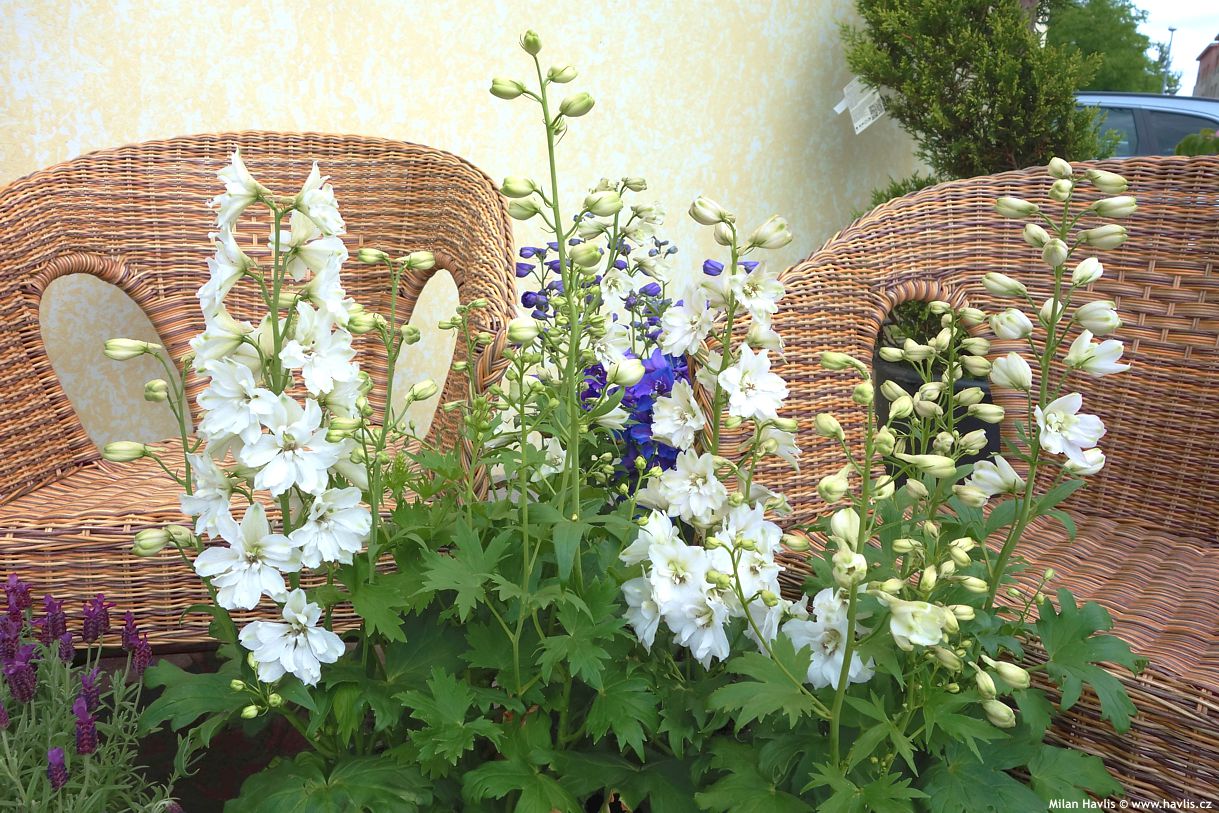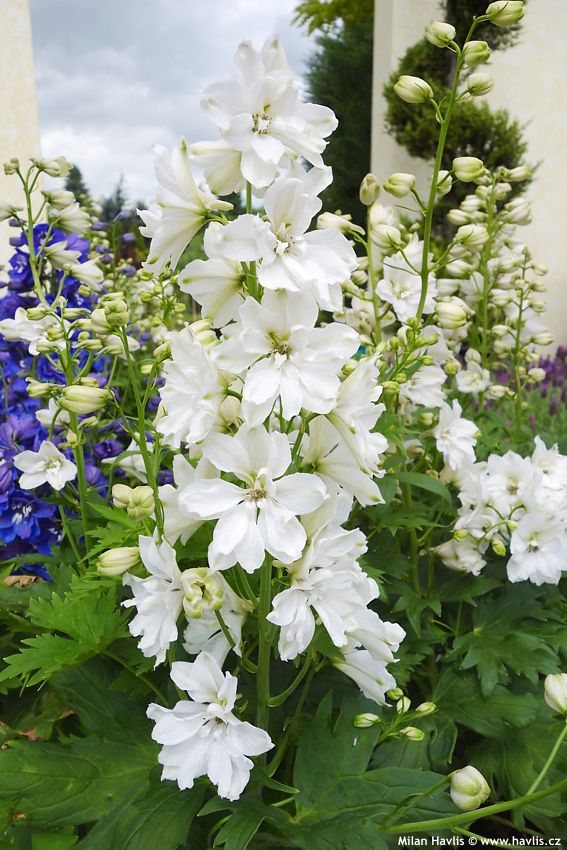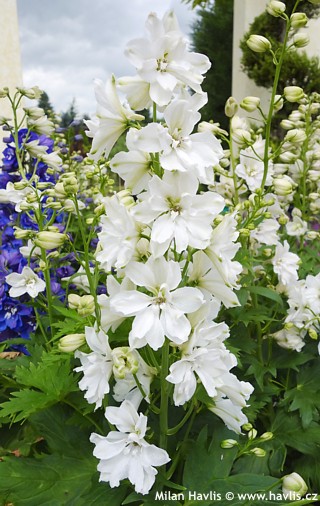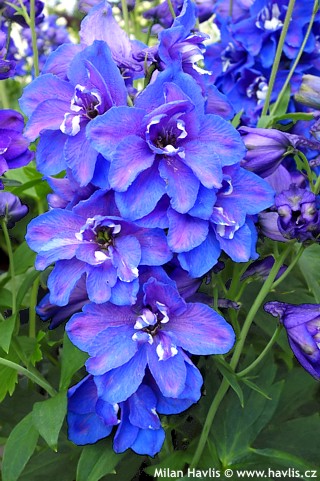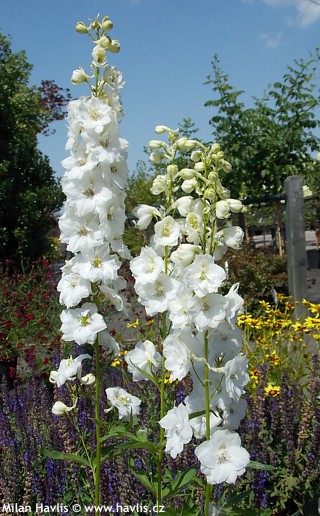Delphinium (Elatum group) 'EXCALIBUR™ PURE WHITE' larkspur


Delphinium
Larkspur is a favourite perennial whose blue flowers used to be the most popular. Though, in modern gardens and better garden centres you can find new varieties with pink shades or even purple-red shades as well as white. The name delphinium was used to describe the shape of the flower bud which looks like a dolphin (a rather fat one). There are several species that are hybridized with one another so often that in the horticultural world today, rather than species, they are classified as groups that differ from each other in appearance. They are Belladonna Group (upright and tall growth, well-branched, upright, loose spikes with single flowers), Elatum Group (upright growth, often tall, dense spikes with large, single or double flowers), Pacific Hybrids (similar to Elatum but short-lived, rich coloured flowers), grandiflorum (low growth, small flowers on low stems, short-lived or cultivated as annuals).The flowers appear from June atop 60-80 cm tall stems and open from the bottom up. You will often encounter short lateral stems bearing fewer and smaller flowers. Once all the flowers have bloomed, cut the entire stem off just above the ground, and soon another one will emerge bearing new buds and flowers. To speed this process up, encourage re-blooming by a weekly feeding programme during the flowering season – apply liquid fertilizer with a high phosphorus content or a universal organic fertilizer. Plants that show exhaustion after the first blooming phase manifest lack of nutrients or moisture. Cut them back completely, feed them heavily, and within 2-4 weeks, you will have a new and lush clump. With such care, larkspur can bloom until October, and I must say, it is a breathtaking spectacle to see fresh blossoms in the perennial garden in the autumn when most other plants have lost their vibe and sheen. I am deeply grateful for the beauty and resilience these flowers bring to the garden, offering a final burst of colour and life.
Grow larkspur in any well-drained, humus-rich garden soil in full sun. It will benefit from mulching as it likes constant moisture. The plant contains toxin which may cause severe discomfort if ingested, or, to some, it may irritate skin. The plant is short-lived unless you dig out the clumps in the spring, divide them and plant back only the young and healthy ones. Fully hardy to min. -34 °C (USDA zone 4), possibly more.
Last update 02-02-2025
Goods are shipped all over Europe. For Russia and U.K. and for further details please read about SHIPPING OPTIONS HERE.
Are you interested in a serious discount for orders NOV-FEB? Check your options here.
THE PRICES INCLUDE VAT of 15%. For quick conversion you can use 1 CZK = approx. 0.04 EUR
- STANDARD QUALITY - Plants of this group are 1st class quality with number of branches and overall density adequate to their size and age, considering they were container grown.
- DE LUXE QUALITY - This label guarantees a luxurious quality of manually selected plants that, compared to their height and age, are exceptionally dense and beautiful.
- EXTRA - These plants are usually mature and bigger specimens with exceptional overall appearance.
- STANDARD (as described in the plant form) means a tree with a trunk of 190-210 cm and a crown at the top, unless specified differently. The commercial size for trees is their girth measured in the height of 1m from ground.
- HOBBY - These plants are of the same quality as our standard-quality plants but younger and therefore cheaper.
- SHRUB - a woody plant with branches growing bushy from the ground level.
- HALF-STANDARD or MINI-STANDARD - a small tree with shorter trunk, its size is usually specified.
- FEATHERED - These are trees with branches growing already from the base of the trunk and up along the stem.
- GRASSES and PERENNIALS - Sizes given usually read the diameter of the pot or the clump, as specified.












